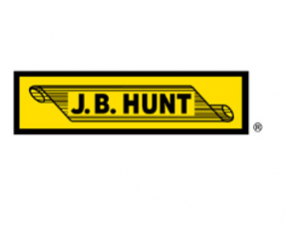
J.B. Hunt’s first-quarter trading update, released on 18 April, clearly showed that all the key financial metrics of this US-based freight forwarder and trucking firm are on the up despite challenging market conditions and rising costs.
Total operating revenues for the quarter came in at $1.53bn, up 6% from $1.44bn one year earlier. Meanwhile, reported operating revenues, which exclude fuel surcharges, rose 12.9% year-on-year.
Rents and purchased transportations costs, salaries and wages, depreciation and amortisation, and administrative costs are all rising, but operating income hit $167m in the first quarter, up 7.7% year-on-year. Net interest expenses were marginally lower, while its corporate tax rate is virtually unchanged at 38%.
“Benefits from volume growth, improved network operations, higher equipment utilisation, lower equipment maintenance costs and increased contract pricing established throughout 2015 across all business units was partially offset by increased rail purchased transportation costs, higher driver wages and recruiting costs, increased equipment ownership costs and increased costs from corporate wide technology upgrades,” the group said in mid-April.
It added, “Intermodal (JBI) load growth was 12% over first quarter 2015 levels, [while the] Dedicated Contract Services (DCS) segment revenue increased by 4% over prior year primarily from additional customer contracts from a year ago and rate increases from more mature customer contracts.”
Meanwhile, the “Integrated Capacity Solutions (ICS) load growth was 45% over the same period in 2015. Truck (JBT) segment revenue increased 5% on a 12% increase in fleet size.”
In JBI, its core division with $895m of operating revenues, the “Eastern network realised load growth of 13% and Transcontinental loads grew 11% compared to prior year, as the west coast port volumes returned to a more normal velocity and rail service significantly improved from a year ago.”
Reported revenues grew 6%, reflecting a 12% volume growth and a 5% decrease in revenue per load. Revenue per load excluding fuel surcharge increased 2% year-on-year, while operating income decreased 1% from the prior year.
Its remaining three business units experienced a rise in reported operating income of between 8% (JBT) and 63% (ICS). With $358m of revenues, DCS – its second-largest revenue contributor – saw a 25% increase in operating income to $44.8m.
Its capital structure is properly balanced. As at 31 March, J.B. Hunt had a total of “$968m outstanding on various debt instruments compared to $878m” one year earlier, and $1bn at the end of 2015, while cash and cash equivalents stood at $6m at the end of the first quarter, all of which testifies to an excellent capital allocation strategy given a manageable net leverage hovering around 1x.
“Our net capital expenditures for the first quarter 2016 approximated $114m compared to $141m for the first quarter 2015,” J.B. Hunt noted.
The group reiterated its guidance for the year, saying “management expects to update its full year 2016 expectations, if necessary, after the release of the second quarter 2016 results.”
Quarterly earnings per share stood at $.088, up 13% year-on-year on a mildly lower share count. Its 10Q statement was released on 29 April.
Source: Transport Intelligence, 4th May 2016
Author: Alessandro Pasetti